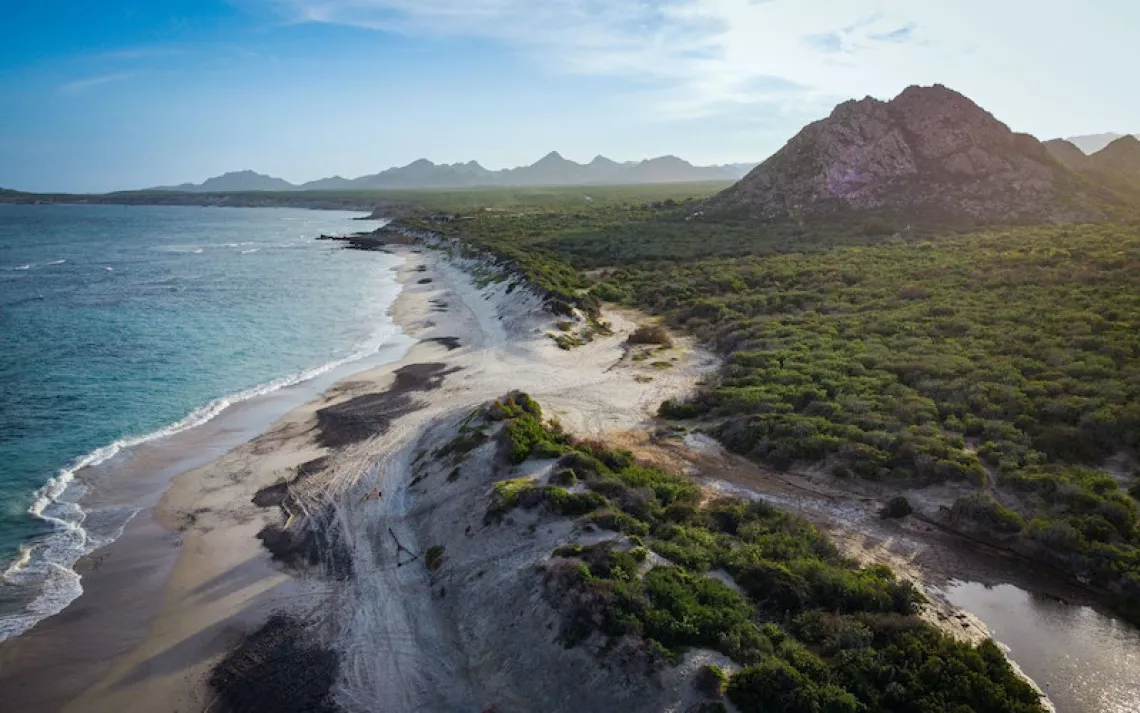Meet Bigfoot's Cousins: 5 Destinations for Legend Hunters

The Scots have their Nessie, the Tibetans have their Yeti, but North America is also crawling with cryptids (creatures whose existence has been rumored but not yet proven). Here are five must-see destinations for the budding cryptozoologist. But Cryptids are only half the fun: even if you don’t score a sighting on your first visit, these destinations offer so many opportunities for non-mythological outdoor adventure that you won’t leave disappointed.
Dave Shealy, a cryptid researcher and director of Skunk Ape Research Headquarters, has a few tips for first timers looking for legends.
- Past sightings in an area are a good indicator of more to come.
- Ask locals about recent cryptid activity.
- Food sources are your best bet. Research the animal's favorite eats and know what’s in season when you visit.
1. Skunk Ape: The Everglades, Florida
The Skunk Ape is Bigfoot’s southern cousin. A russet-furred, gorilla-like creature, the Skunk Ape measures about seven feet tall and exudes an appalling odor. First described in the legends of the local Seminole and Miccosukee tribes, the animal gained public recognition after officially reported sightings began 60 years ago. According to Shealy, Skunk Apes are generally shy animals, drawn to the Everglades' vast tracts of uninterupted wilderness. So even if the Skunk Ape slips by, you won't suffer wildlife deprivation in the Everglades, which is the largest wilderness area east of the Mississippi and teems with migratory birds, alligators, and snakes.
2. Illie (Iliamna Lake Monster): Iliamna Lake, Alaska
Indigenous legends tell of a giant black fish that bites holes in the bottoms of canoes. Whether you’ve set your sights on the giant or cast your line for a more modest catch, you're sure to enjoy the famous fishing opportunities of Alaska’s largest lake. Recent evidence indicates that Illie may in fact be a Pacific sleeper shark. The population of these deep water predators has recently surged in northern waters as climate change reduces the icy islands used by polar bears and seals, providing sharks with an all-you-can-eat buffet.
3. Menehune: Kaua’i, Hawaii
More than 1,000 years ago, a pond was built to catch fish on the lush banks of the Hule’ia river. The feat of aquaculture engineering exists to this day and is now called the Menehune Fishpond, in honor of its supposed builders, the Menehune (pronounce meh-neh-HOO-neh), a mischievous little people of legend. The pond overlooks Hule’ia National Wildlife Refuge, a home for endangered Hawaiian waterfowl. Although the refuge is closed to the public (the official reason is protection of the birds...) the curious can book kayaking tours on the Hule’ia river, which meanders through the refuge.
4. Pope Lick Monster: Pope Lick Park, Kentucky
High above Pope Lick Creek, on the Norfolk Southern Railroad trestle, a half-human, half-goat monster hypnotizes his victims, luring them onto the tracks where they fall prey to the oncoming train. The creature is said to have been exhibited as a circus freak in the late 19th century, escaping captivity when lightning struck the circus train and left him the lone survivor. The monster’s trestle has been the site of several deaths by train or falling, so keep your search grounded and wander the trails of the surrounding Pope Lick Park, or go for a paddle on the creek. The park is part of Louisville’s City of Parks initiative, which is adding thousands of acres of parkland to the city’s “greenprint.” Explore them all on the Louisville Loop, a 100 mile trail that encircles the city, linking the parks with neighborhoods and other local attractions.
5. Monster of Monterey: Monterey Bay, California
The plesiosaur was supposed to have gone extinct 60 million years ago, but someone must have forgotten to tell the Monster of Monterey. In 1925, a rotting carcass washed up on Moore’s Beach and its discoverers read Jurassic origins in the creature’s allegedly 20 foot long neck. More recent sightings of a prehistoric survivor alive and swimming have been reported. A cozy hideout for the massive monster might be the Monterey Canyon, the bay's undersea gorge that plunges two and a half miles into the depths. For guaranteed sightings of rare aquatic (if not prehistoric) creatures, visit the Monterey Bay Aquarium, a nonprofit aquarium dedicated to conservation and education.
 The Magazine of The Sierra Club
The Magazine of The Sierra Club



